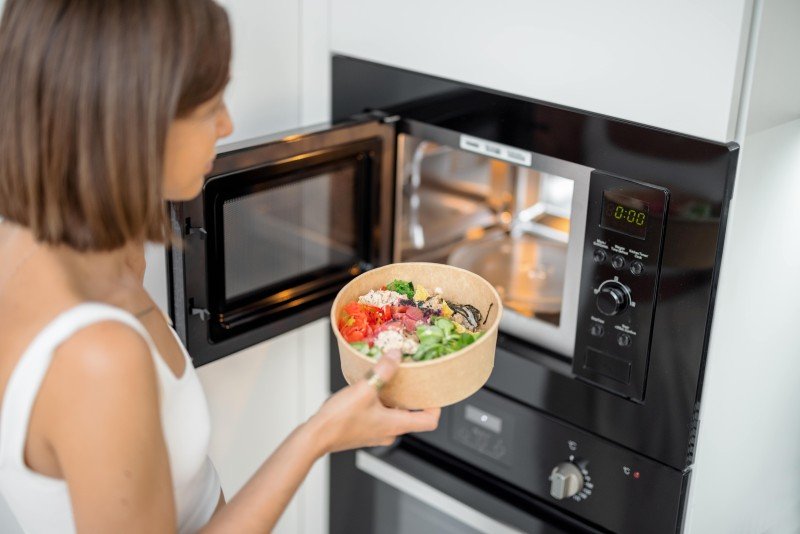Don't Believe These “Trends” About Hobs And Ovens
Understanding Hobs and Ovens: A Comprehensive Guide for Cooking Enthusiasts
The kitchen is often considered as the heart of the home, where culinary productions come to life. Two important elements of any kitchen are the hob and the oven. While they are both important for food preparation and cooking, lots of homeowners might not totally understand the differences, performances, and numerous types readily available in the market today. In this post, we will explore these devices in detail, assisting you make notified choices for your culinary needs.
Table of Contents
- What is a Hob?
- 1.1 Types of Hobs
- 1.2 Benefits of Different Hob Types
- What is an Oven?
- 2.1 Types of Ovens
- 2.2 Benefits of Different Oven Types
- Choosing the Right Hob and Oven for Your Kitchen
- Regularly Asked Questions (FAQs)
- Conclusion
What is a Hob?
A hob, commonly understood as a cooktop, is a cooking surface area that you position cookware on to prepare food. It features a variety of heating components and is frequently set up on countertops. In modern kitchens, hobs are available in different designs, innovations, and functionalities.
1.1 Types of Hobs
There are a number of kinds of hobs offered in the market:
Type
Description
Gas Hob
Uses burner for cooking, providing accurate temperature control.
Electric Hob
Operates using electrical heating components, commonly seen in strong or radiant types.
Induction Hob
Utilizes magnetic fields to heat pots and pans directly, promoting energy effectiveness.
Ceramic Hob
Features a smooth glass top, using electric coils underneath the surface.
Solid Plate Hob
Standard electric hobs with exposed metal plates that warm up.
1.2 Benefits of Different Hob Types
Gas Hobs:
- Quick heating and cooling.
- Visual flame control for exact cooking.
Electric Hobs:
- Even heating; suitable for simmering and boiling.
- Easy to clean, particularly flat surface areas.
Induction Hobs:
- Energy-efficient as just the pot heats up.
- Safety features, such as automatic shut-off.
Ceramic Hobs:
- Attractive aesthetic appeals with a smooth finish.
- Even surfaces for easy cleaning.
Solid Plate Hobs:
- Cost-effective and resilient.
- Good for standard cooking requirements.
What is an Oven?
An oven is a kitchen appliance utilized for baking, roasting, and broiling food. Ovens can be standalone units or built into kitchen cabinets, offering different cooking techniques that can enhance or transform active ingredients.
2.1 Types of Ovens
Similar to hobs, there are multiple types of ovens, each with its benefits:
Type
Description
Standard Oven
Operates with heating aspects, best for baking.
Convection Oven
Uses fans to distribute hot air, cooking food uniformly and rapidly.
Microwave
Cooks food utilizing electromagnetic radiation; ideal for reheating.
Steam Oven
Makes use of steam to cook food, preserving moisture and nutrients.
Wall Oven
Built into the wall, offering benefit and visual appeal.
2.2 Benefits of Different Oven Types
Traditional Ovens:
- Simple to use with no complex settings.
- Versatile for different cooking approaches.
Convection Ovens:
- Faster cooking times due to air circulation.
- Improved browning and crisping for baked products.
Microwave Ovens:
- Quick cooking or reheating of food.
- Energy-efficient for low-volume cooking.
Steam Ovens:
- Health-conscious cooking that maintains nutrients.
- Exceptional for baking bread and cooking veggies.
Wall Ovens:
- Convenient positioning; conserves space.
- Less flexing required to access cooking dishes.
Picking the Right Hob and Oven for Your Kitchen
When choosing a hob and oven, aspects such as space, cooking design, and individual preferences should be thought about. Here's a basic guide to help you choose:
Factors to Consider
- Cooking Needs: Evaluate your cooking habits. Do you often bake, or is stovetop cooking more prevalent?
- Area Availability: Measure your available kitchen space. Some hobs or ovens might need more space than others.
- Fuel Type: Decide between gas and electric, based on accessibility and personal choices.
- Budget plan: Determine what you're willing to invest and discover options within that range.
Quick Tips
- Focus on Efficiency: Look for energy-efficient designs to reduce long-lasting expenses.
- Read Reviews: Explore user evaluations to gather opinions on efficiency and reliability.
- Seek advice from Professionals: Seek suggestions from kitchen design experts when preparing your design.
Frequently Asked Questions (FAQs)
1. What is the distinction between a hob and an oven?
A hob is a cooking surface area normally for stovetop cooking, while an oven is an enclosed space used for baking, roasting, and broiling food.
2. Can I use any pot on an induction hob?
No, induction hobs require magnetic pots and pans. Stainless steel and cast iron pots work, however non-magnetic products like aluminum won't.
3. How do convection ovens differ from standard ovens?
Stove use fans to distribute hot air for even cooking, whereas traditional ovens do not have this feature.
4. Is it possible to have both a hob and oven as a single system?
Yes, there are variety cookers that incorporate a hob and an oven within one appliance, using a detailed cooking service.
5. How do I tidy my hob and oven?
The majority of hobs and ovens have actually recommended cleansing methods depending upon their materials. It is advisable to speak with the maker's directions for the best practices.
Comprehending the distinctions in between hobs and ovens is essential for anyone wanting to enhance their kitchen space or enhance their cooking skills. By knowing Ovens And Hobs , their benefits, and how to select the best ones for your requirements, cooking can end up being a more enjoyable and efficient experience. Whether you are an experienced chef or a newbie cook, the ideal combination of hob and oven can elevate your cooking productions to new heights.
